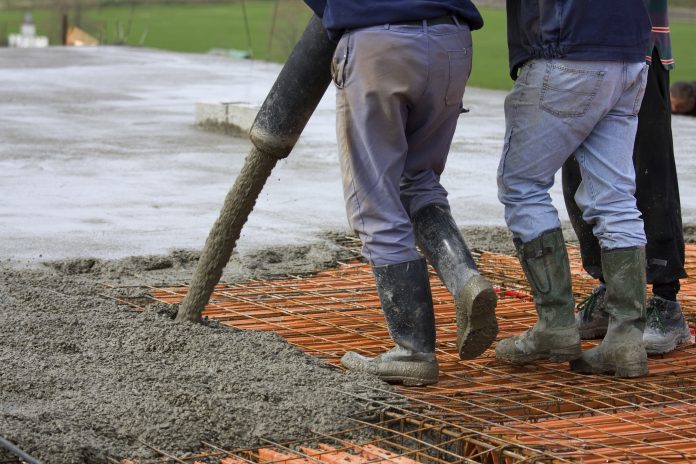It started more than 20 years ago when there was a push towards developing less permeable flooring systems. Now, we have even more impermeable systems. With impermeable floor covering, we’re potentially trapping moisture below the floor covering, and I believe this is one of the most significant factors that has resulted in moisture-related issues.
Carpet tiles, LVT flooring, and even some broadloom carpet have a lot of impermeable backing systems now. Used to be the ActionBac products or the classic back products would transfer that moisture through those backing systems. But now that the backing system is impermeable, it’s going to block that moisture transfer coming from the concrete subfloor.
The ASTM F1869 test is 60 to 72 hours in duration; basically, the test is in place on the concrete for three days. The Process: A dish of anhydrous calcium chloride is placed under a plastic dome on the concrete subfloor. It is weighed before and then after the three days have elapsed. The weight gain (from absorbing moisture) is entered into a mathematical formula. The resulting number is supposed to be the amount of moisture emitted from the concrete subfloor over 1000 square feet per 24-hour period.
However, the test has a lot of variables in it. For example, you’re relying upon somebody to weigh the dish before the test and afterward accurately. Then, you depend on the numbers to be entered correctly. Mistakes can happen. And then there are the ambient conditions: temperature, relative humidity, etc. When that dish of anhydrous calcium chloride is placed under the plastic dome with a seal around it, what happens to the moisture in the air you just trapped inside the dome? Some of it is being absorbed by the anhydrous calcium chloride. And what about the seal around the plastic dome? How secure is that? And what about the porosity of the concrete surface? All these factors can have major influences on the test data. Lastly, the test results will do nothing for you in the future. They are irrelevant the next day, next month, next year. The ASTM F1869 has no idea of what is down in the concrete or how it will move.
The in-situ relative humidity test has broad acceptance within the floor covering industry, and I think it’s because it gives the appearance of a hard, static number in digital form. It gives you a relative humidity reading of supposedly what is in the concrete. There is no calculation involved. You just take the reading after 24 hours have elapsed. Typically, the sensor is placed at 40% of the slab thickness as recommended by the industry with the notion that the test results will indicate relative humidity equilibrium within the concrete slab thickness.
The problem is, what are you testing? Getting the relative humidity doesn’t tell you how much moisture is in that concrete subfloor. The relative humidity is relative to temperature. For example, the same amount of moisture indicating 100% RH at 60 degrees F will indicate about 50% RH at 80 degrees F.
Consequently, the results can be all over the board with ASTM F2170, influencing factors such as ambient conditions, concrete temperature, alkali in the concrete, etc. And, of course, the relative humidity number reading that you get is only for that moment in time. Which, of course, makes sense, since you are winding up with a static number for a fluid dynamic. It’s constantly moving, so the test result is only for the moment in time that you get the reading. No prediction. No warranty. It is essentially irrelevant because the relative humidity can increase or decrease over time.
We will always have water in the concrete, and there can always be movement from other sources of moisture coming into the concrete and escaping. We just have to control, contain and mitigate that moisture. And there are a number of options to do that. Always utilize a system that is warranted to 100% relative humidity. The best way to comply with lean construction and not waste time and cost resources is to deliver the concrete with a compatible moisture mitigation system inside the concrete mix. If it’s an existing concrete subfloor, use a topical applied system that is completely warranted for moisture vapor intrusion into the flooring system from below.
Concrete always has moisture in it. If a moisture control system is not in place, naturally occurring changes in the environment in temperature or humidity above the slab can affect the flow of moisture emissions and potentially damage the floorcovering system.
Remember, even the best moisture test will only give you a reading for a specific location on the concrete subfloor, under specific conditions, and at a specific moment in time. The reading you get today may change dramatically and cause the flooring system to fail. The installer must take preventative measures now to avoid getting a callback in the future.

